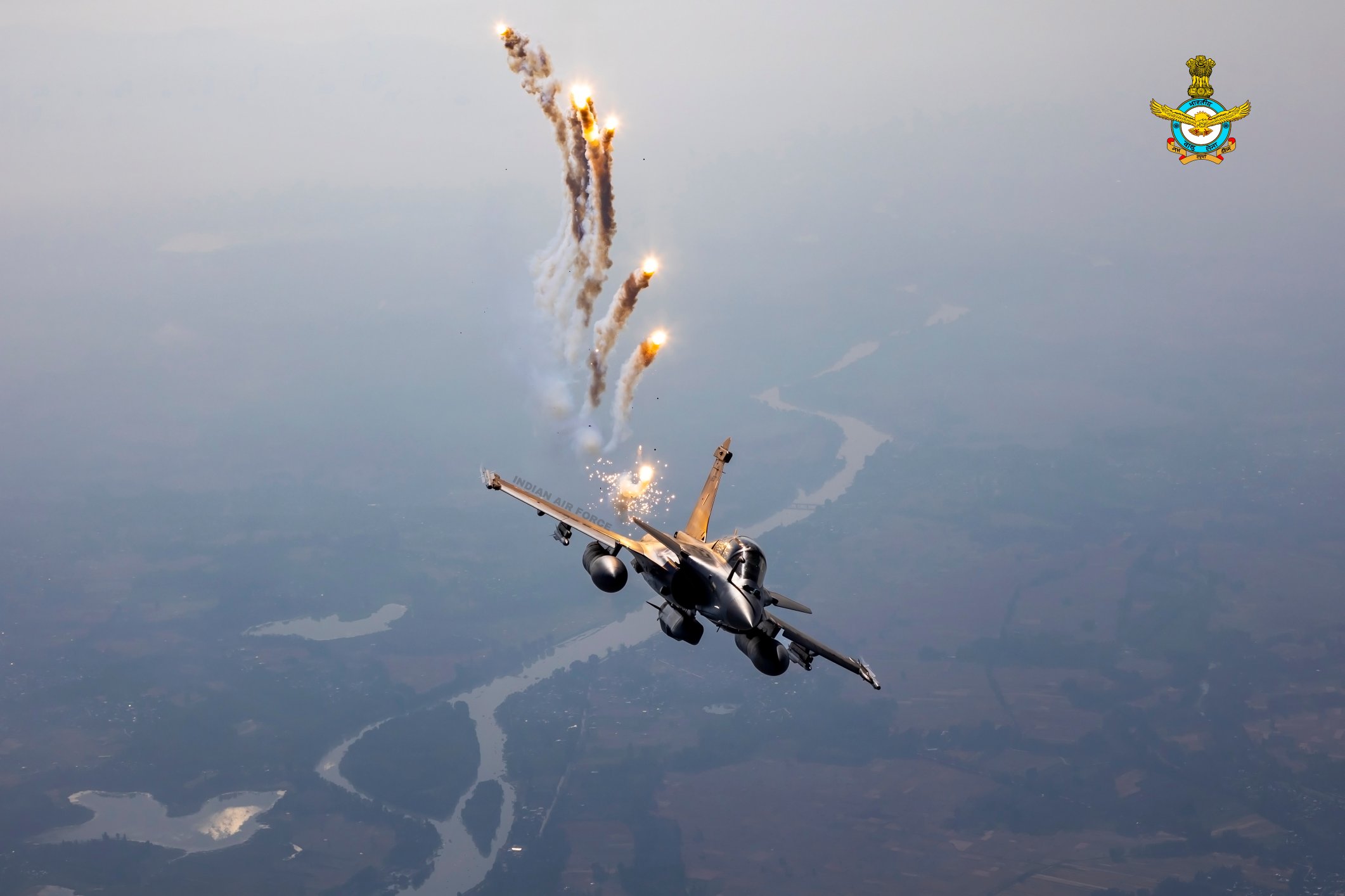The Indian Air Force is gearing up to modify its fleet of Dassault Rafale fighter jets. IAF has so far received 30 French-made aircraft out of 36 it ordered.
Dassault Aviation has already delivered 30 Rafale fighter jets to India, with the remaining six slated to arrive by April 2022 as part of a five-year inter-governmental agreement.
IAF to start upgrading Rafale fighter fleet from January 2022
Read @ANI Story | https://t.co/xBz5nvvVCn
#Rafale pic.twitter.com/jbh6lmrPPP— ANI Digital (@ani_digital) November 21, 2021
The IAF Rafales will be outfitted with India-specific enhancements from January 2022 in order to further strengthen Rafale’s capabilities.
An IAF delegation is now in France assessing the India-specific enhancements carried in the RB-008 aircraft. Top government officials told ANI that the integration of new equipment is expected to begin in January of next year, once the enhancements have been vetted and accepted by the IAF.
Integration of high-capacity missiles, low-band jammers, and satellite communication systems tailored to Indian requirements are among the upgrades planned for IAF.

Recently, French Ambassador Emmanuel Lenain, stated that “despite all the hardship” suffered in the past two years due to the COVID-19 epidemic, Paris would be able to deliver all Rafales on time. “To meet the commitment, teams in France have worked extra shifts. 30 have been shipped to India as of today. So we’re on schedule, and we’ll meet our goal of delivering all 36 by April of next year,” he added.
According to reports, kits would be shipped to India, and three to four Indian rafales will be outfitted with these kits every month. India will receive 36 Rafale fighter jets with tail numbers in the RB and BS series.
RB & BS Series
The RB-008 will be the last aircraft to arrive in India from France and is named after former IAF chief Air Chief Marshal RKS Bhadauria (retired). He had played a key role in the signing of the Rs 60,000 crore contract with France as part of a government-to-government agreement.
The BS tail numbers honor Bhadauria’s predecessor, Air Chief Marshal BS Dhanoa (retired), who superannuated in 2019 after spearheading the February 26, 2019, Balakot airstrikes.
The aircraft will be upgraded at the Ambala Air Force Station, which houses the country’s first Rafale squadron. When all 36 fighters are inducted, IAF will have 8 RB series twin-seater trainer aircraft and 28 BS series single-seater jets in its fleet.
On July 28, IAF had made its second Rafale squadron — 101 Squadron — operational from the Hasimara airbase under the Eastern Air Command (EAC). The twin-engine Rafale jets have the capabilities of carrying out a variety of missions such as ground and sea attack, air defense and air superiority, reconnaissance, and nuclear deterrence.
Air Chief Marshal RKS Bhadauria, CAS formally inducted Rafale aircraft into No. 101 Sqn at AFS Hasimara in Eastern Air Command (EAC) on 28 Jul. The event included a flypast and a traditional water cannon salute. pic.twitter.com/kdENCcwyR3
— Indian Air Force (@IAF_MCC) July 28, 2021
The final batch of Rafale aircraft, which will be the most capable of the entire fleet, will arrive by next year. The country is currently going to move forward with the acquisition of 114 multirole fighter aircraft, which is regarded as one of the largest military procurement programs in recent years.
India-Specific Enhancements For Rafale Jets
While Egypt, also a Rafale user, is particularly affected by a blistering desert climate, India’s battle conditions are governed by a complex weather pattern determined by the Himalayas and the Thar desert.
It is said that the Dassault Rafales delivered to India are more sophisticated than those acquired by France and Egypt and carefully modified to match the IAF’s current needs. Helmet-mounted optics and a targeting mechanism allow pilots to fire weapons with lightning speed.
Given the fact that India has a volatile border with China and Pakistan placed in the regions of Ladakh and Kashmir with sub-zero temperatures, the Indian Rafale jets also have cold engine start capability to operate from high-altitude bases including Leh.
Additionally, Indian Rafales are being outfitted with the X-Guard fiber-optic towed decoy system, which allows the aircraft to evade both air-to-air and surface-to-air missiles.

The weaponry package outperforms all other weapons systems in the vicinity, allowing India to target Pakistani jets from afar while remaining undetected. In addition, the SCALP air-to-ground missile will be capable of destroying practically any target on Pakistani land.
The fighter jet is equipped with the Meteor, an air-to-air beyond-visual-range missile, believed to be the finest in its class. At a range of nearly 100 km, it is capable of taking out hostile aircraft.
The Scalp air-launched missile for Rafale jets is designed to strike high-value targets such as radars, airbases, ports, and communication centers. With long-range and low-altitude flying capabilities, the missile can operate at any time of day or night.
Besides, France has already agreed to equip Indian Rafale fighters with air-to-surface Hammer all-weather smart weapons. The Hammer is a fire-and-forget weapon with a range of 70 km and has great resilience to jamming and target location errors. It can be launched from a small range to a longer range of 70 km without the use of GPS.
- Contact the author at ashishmichel@gmail.com
- Follow EurAsian Times on Google News




